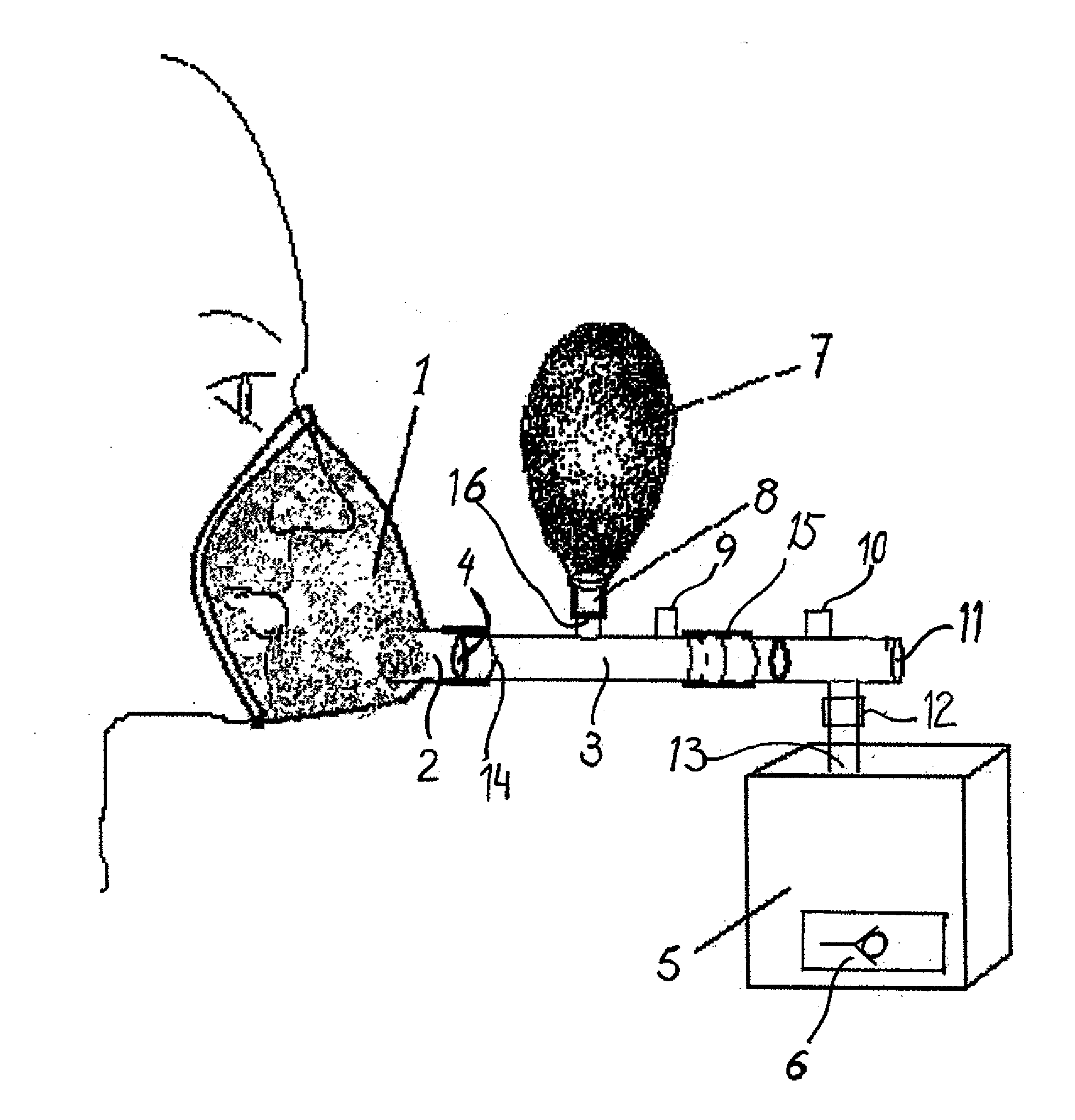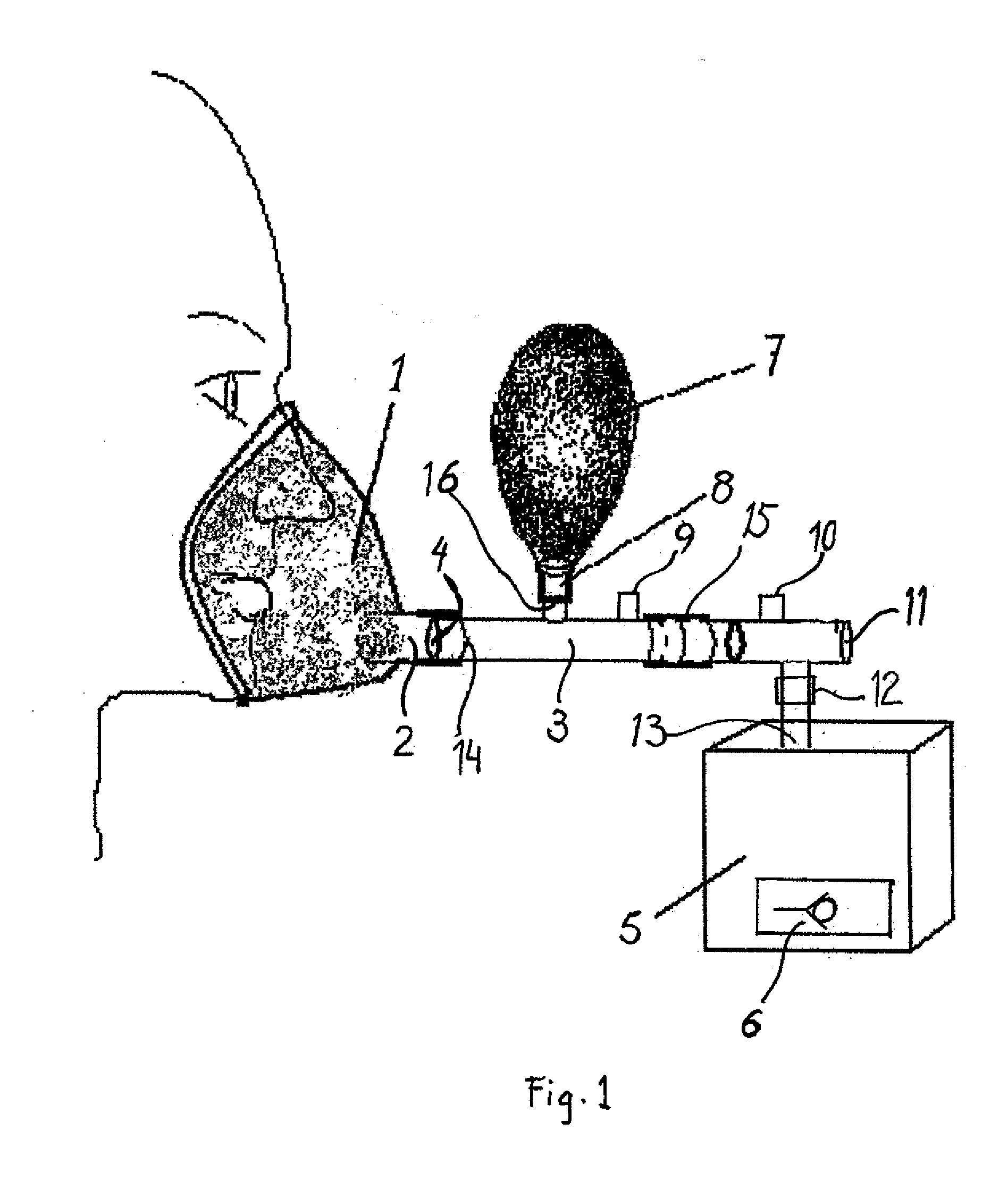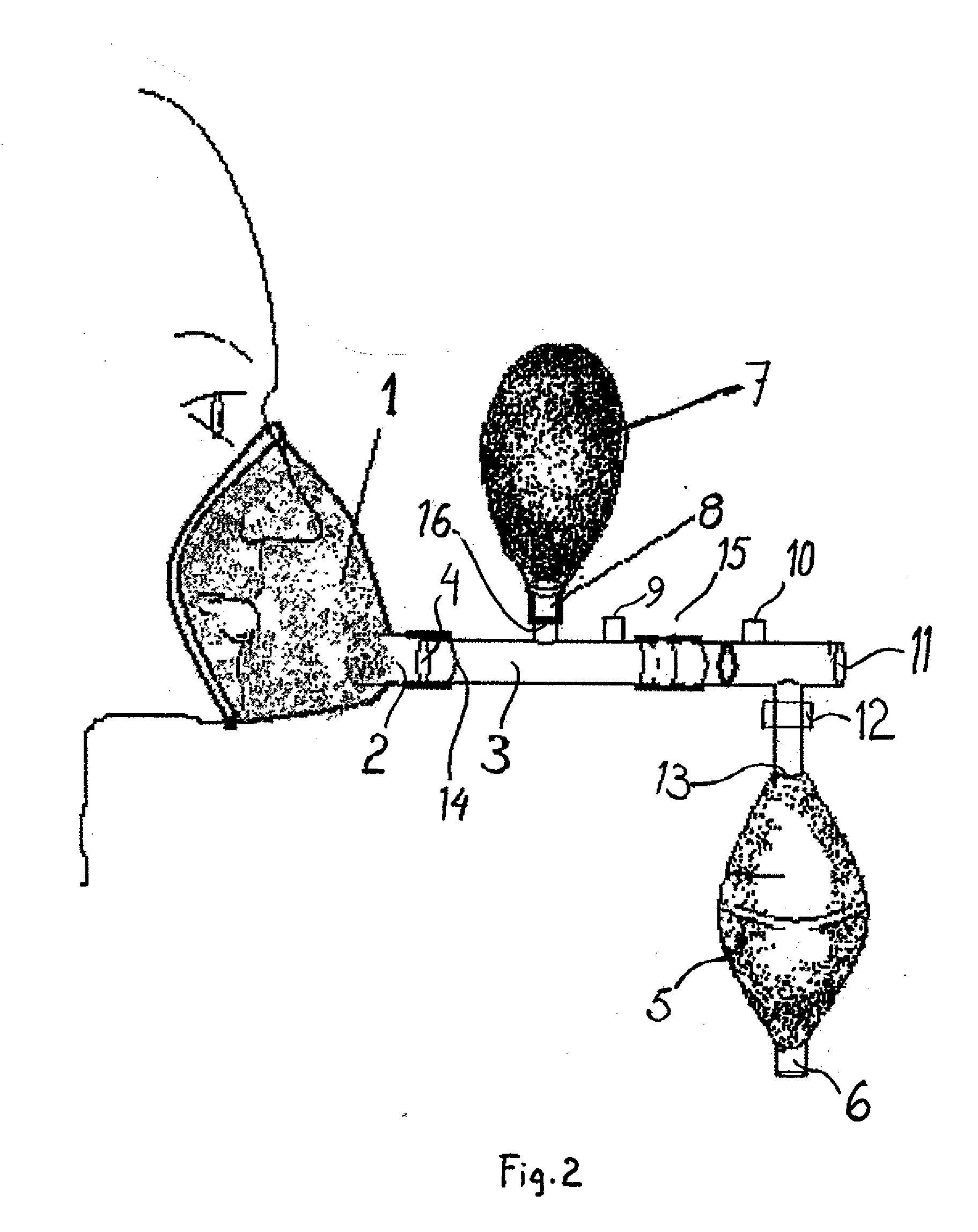Device for Equalization of the Pressure in the Middle Ear
a technology of pressure equalization and middle ear, which is applied in the field of devices for equalizing pressure in the middle ear, can solve the problems of increased risk of other complications, reduced hearing ability, and hearing loss of sufferers, and achieves the effect of increasing air pressure and increasing pressur
- Summary
- Abstract
- Description
- Claims
- Application Information
AI Technical Summary
Benefits of technology
Problems solved by technology
Method used
Image
Examples
example 1
[0048]A pilot study conducted on four subjects with serous otitis media demonstrated 100% compliance and immediate improvement of the pressure of the middle ear after 20 minutes of usage. The subjects, aged 2-7 years, were collected from the waiting list for insertion of ventilation tubes in general anaesthesia at the hospital. The criteria for inclusion for surgery are bilateral otitis media with effusion for more than 6 months assessed by tympanometric and clinical evaluation.
This study was small but of value to demonstrate that the device was able to produce the desired effect and reduced the negative pressure in the middle ear of the test subjects.
example 2
[0049]A pilot study conducted on patients aged 1-6 years (from the waiting list for insertion of ventilation tubes at the hospital) showed improved tympanometric results in 9 of 11 of the test subjects with otitis media with effusion treated 2 times a day by the device of the present invention for equalization of the middle ear pressure during 4 weeks.
[0050]The middle ear pressure was measured at inclusion and after 2 and 4 weeks of treatment with the device.
[0051]Results:[0052]One patient refused to use the device.[0053]One patient has not experienced desired clinical effect of the treatment.[0054]All the other subjects have objectively improved middle ear pressure confirmed by tympanograms.[0055]No adverse effects were reported.[0056]The device was well tolerated by the children. They found it as interesting as a toy, and therefore accepted the treatment.[0057]The youngest subject, 1.5 years of age, had been suffering from serous otitis media for about 6 months. This had limited h...
example 3
[0060]An ongoing study conducted at the Sahlgrenska University Hospital in Gothenburg Sweden shows promising results for the invented device regarding the middle ear pressure and hearing in young children. The patients were chosen from the waiting list of the hospital for operation of serous otitis media and only subjects with middle ear pressure 6 months and were about to be operated under general anesthesia for insertion of ventilation tubes.
[0061]The patients were randomized into a study and a control group and the audiologist and the treating doctors were blinded for the treatment given. The study group received treatment twice a day with the invented device. Both the study and the control group underwent hearing and tympanometric tests at inclusion and after 2 weeks.
[0062]The middle ear pressure is measured in dekapascal (da Pa) and the closer the pressure is to 0 the better the movement of the tympanic membrane and the better the hearing. In young children, it is normal to fin...
PUM
 Login to View More
Login to View More Abstract
Description
Claims
Application Information
 Login to View More
Login to View More - R&D
- Intellectual Property
- Life Sciences
- Materials
- Tech Scout
- Unparalleled Data Quality
- Higher Quality Content
- 60% Fewer Hallucinations
Browse by: Latest US Patents, China's latest patents, Technical Efficacy Thesaurus, Application Domain, Technology Topic, Popular Technical Reports.
© 2025 PatSnap. All rights reserved.Legal|Privacy policy|Modern Slavery Act Transparency Statement|Sitemap|About US| Contact US: help@patsnap.com



